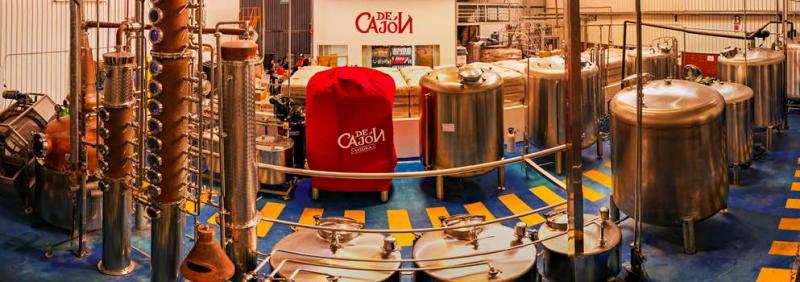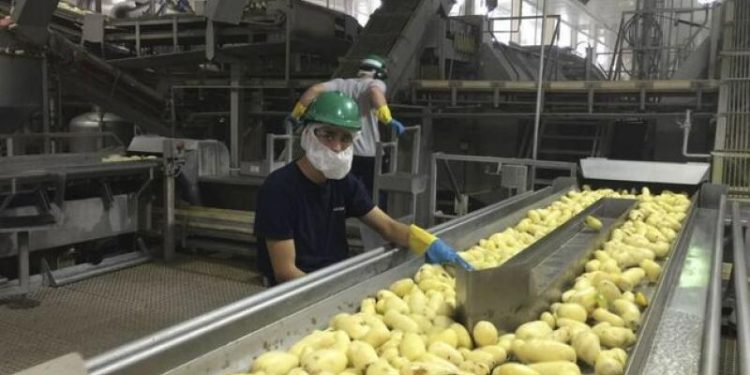Recently, at the initiative of the Congress of the Republic, Law No. 31920 has been promulgated, which aims to “promote and encourage the agroindustrial activity of potato production with the purpose of stimulating the supply of various products derived from “This is for different markets, as well as promoting its export, thus generating greater profitability for potato producers.” It is indicated that there will be a period of 120 days to prepare its regulations.

In general terms, the following lines of action are mentioned: technical assistance to potato producers; potato seed certification; dissemination and market identification campaigns; promotion of financing programs for the industrialization of potatoes.
According to information from MIDAGRI, in the 2021-2022 campaign the total potato production was 6 million tons. According to the same source, 5.2% of the potato supply is used as an input for industrial activity (potato flakes for frying, white chuño, cooked and dehydrated potato flour, prepared frozen potatoes).
In recent years, the three segments of the potato market have made some progress in the development and trade of processed products. Based on native (colored) varieties, chips are now marketed and sold by various companies in the local and international market, and more recently, vodka based on native varieties has been introduced to the market (there are at least two brands). that are mainly channeled to foreign markets. With the yellow varieties (Tumbay and Peruanita), the peeled, pre-cooked and frozen product has been exported for several years to Peruvian markets abroad.
In the white potato segment , in addition to the flakes that have used local white varieties for several years, some poultry chains are now processing frozen pre-fried potatoes with local raw materials. To the above we must add the white chuño (tunta) whose production and processing (which has been modernized) is concentrated in the southern mountains and a good part is exported to Bolivia. Finally, we can mention some more artisanal products that are inserted in regional markets (for example, dried potatoes as a base for carapulcra, tocosh, among others).
Despite these advances, we still cannot say that there is a competitive potato-based agroindustry. There are some processing plants for white and native potato chips, but in the case of pre-fried/pre-cooked frozen potatoes, there are still no large plants (most of the processing is carried out via contracting services).
In this framework, the question is whether the recently published law can help the development of this agribusiness. A point that draws attention is that it focuses mainly on supply and neglects the processing itself, which is key to obtaining products of the quality required by the different markets (the issue of financing without specify what it may consist of). The approach should be aimed at promoting innovations throughout the production, processing, marketing and consumption chain, so that private initiatives view this type of investment positively.
Likewise, you should think about the research and development of various processed products based on market demands. They can be mentioned, for example: healthy snacks with natural seasonings, confectionery products, gluten-free bakery products, functional drinks (energy drinks or nutritious shakes), instant foods (soups or purees based on colored potatoes), cosmetic products natural, products for the beverage industry (taking the vodka experience as a reference), ready-to-cook potatoes, biodegradable products (bags).
Although it is true that the possibilities are broad, in the short term, specific objectives could be proposed to enhance the current development and processing of products based on native varieties (which include yellow varieties) and see how the potato segment can be modernized. for chicken factories where there is much to improve both at the production, commercial and processing levels. When the regulations for this law are prepared, it must be thought with a logic of value chains to ensure sustainable interventions in the different links.
Finally, we must avoid making the same mistakes of experiences that have sought to promote agribusiness in rural areas where, despite interesting initial announcements, they did not translate into concrete interventions. Two cases can be mentioned.

In August 2021, the Agricultural Industrialization Law (Law No. 31339) was published, which proposed the development of the National Agroindustrial Competitiveness Plan (COMPEAGRO), of which no progress is known so far. Another example is the Law for the Promotion of productive activities in high-Andean areas Law No. 29482 (2008) which sought to promote rural agroindustry (for companies located above 3,200 meters above sea level) and did not obtain concrete results either. Let’s hope that this time it is different and the regulations give a positive meaning to this law.










